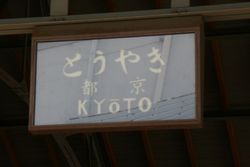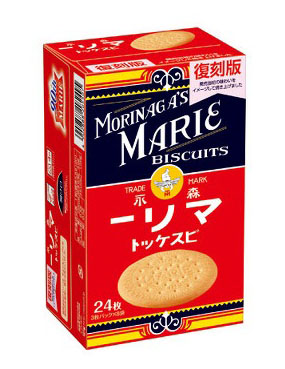Matt's answer is right enough, and Axioplases's description does have historical accuracy, but I felt differently enough to propose another answer.
First, here is the truck in question, with the words カンガルー便 written on the side, "backwards".

Note, though, that the text for the parent company, Seino, is the "right" way round, presumeably because it's in romaji, which is not as flexible as Japanese kanji and kana in terms of direction. If this were simply a matter of viewing the car in a "front is top" concept, then why not also include the romaji? It's only the Japanese text that is flexible enough about direction.
How flexible is Japanese in terms of direction? A little. The root of the issue lies in the fact that Japanese text is traditionally written vertically. The choice to go left or right when writing horizontally is, or was, therefor somewhat arbitrary. Back in the day, one would have come across writing right to left more than today, as in this old train sign:

Or how the car brand "Ford" is written ドーォフ (or ドーオフ) on this Taishō era building:

Or in this awesome political map:

Note in all these pictures that the romaji offered goes left-to-right, but both kanji and kana are right-to-left.
Why do these historical examples matter? Because it's evidence that there is a cultural basis for accepting text right-to-left that makes the truck sign possible in Japanese culture.
What I'm driving at is the contrast with English culture where the direction of text is 100% locked in to be left to right. If a hypothetical delivery company in an English country wrote "Yreviled Ooragnak" on the side of their trucks, because they wanted to follow a "front is top" logic, or any other rational, no one would have any doubt they were doing something wrong. The horizontal direction in English is non-negotiable, with the only exception being deliberabe subversion of the norm in some kind of artistic context.
Of course, the massive exposure to English text has influenced textual presentation in Japan, to the point where you don't see this much anymore. But it's not a rule that writing must go left to right, and some people will still go right to left, like this racist jerk here, who probably did it precisely because he doesn't want to play by the west's rules (Just so its clear, although the text direction supports my point, the content of this jerk's sign is unredeemable, and I strongly oppose the sentiment):

So the "backward" phenomena is not just about vehicles or flags, or a front-as-top logic. Japanese text, insofar as it has escaped English cultural hegemony, can be flexible about which horizontal direction it goes in. Why exactly Seino opted to go right-to-left on the right side of their trucks, I'm not sure, I just know that the option to do so existed for them because the language permits it in a general sense.
Maybe right-to-left writing will die out, as it does seem to be the exception these days. Or maybe not. Consider this nostalgic retro-branding of a biscuit box, made available in 2014, preserving the right-to-left writing, for the Japanese text only, to give an old-timey feel. Maybe one day a retro trend will spark a revival...

What I'm pretty sure you won't see, though, is bottom-to-top. The text direction is not that flexible.






